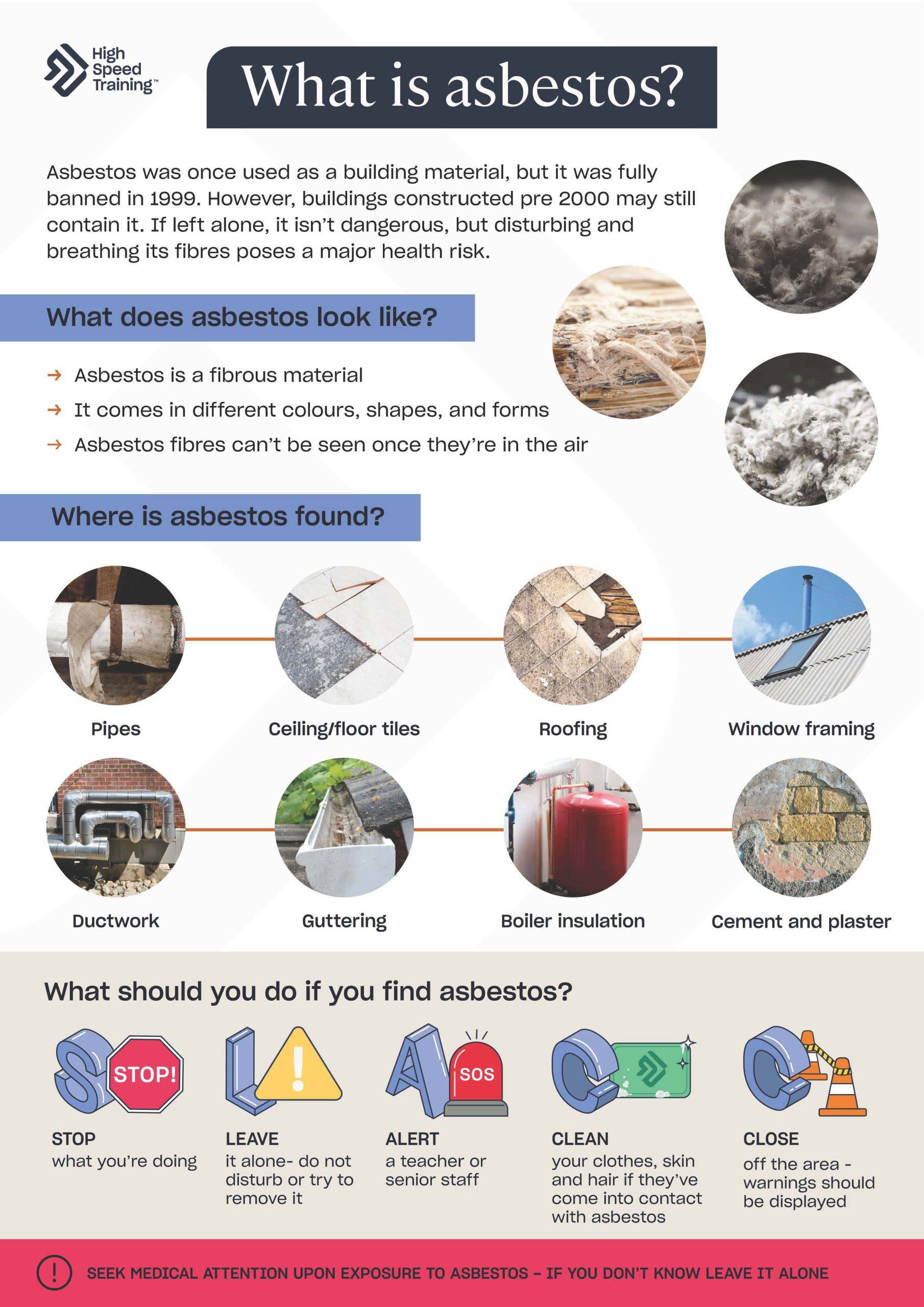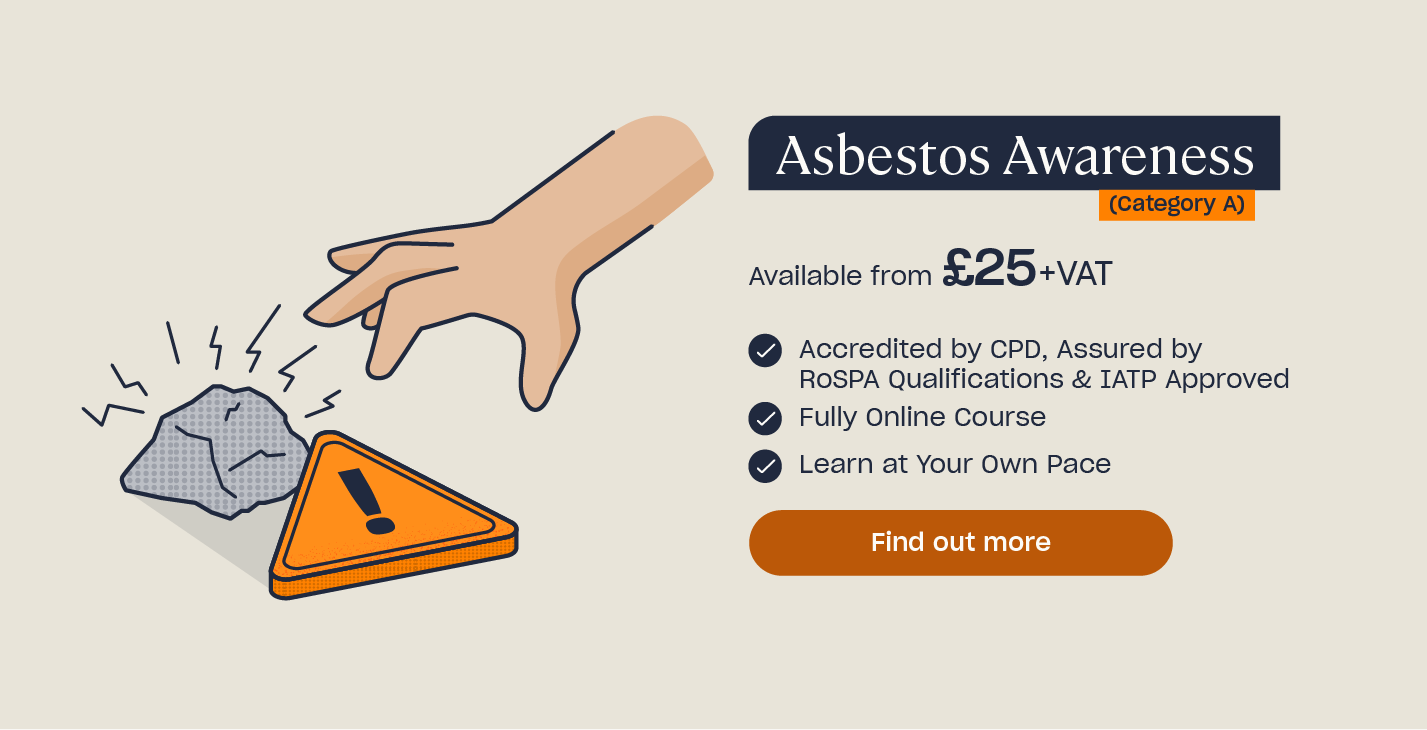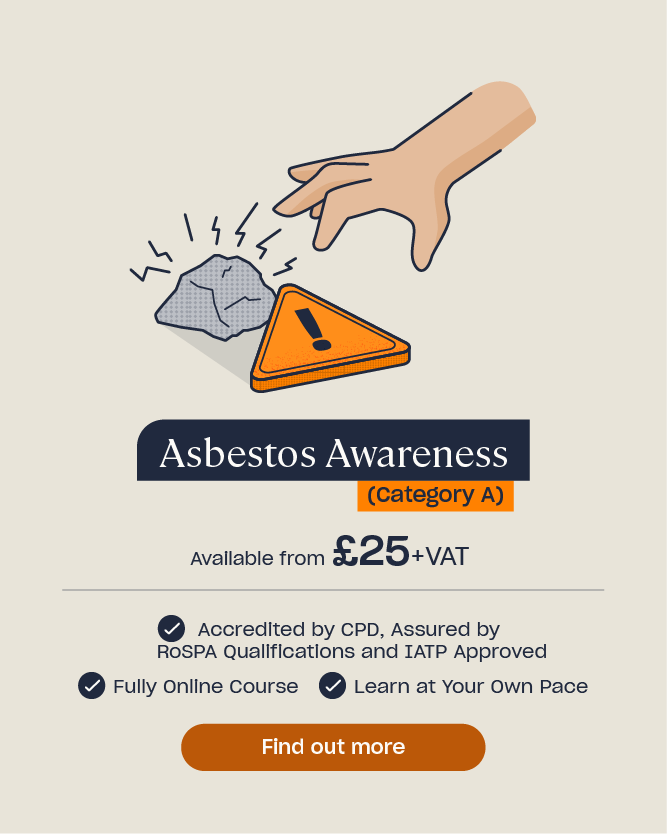Asbestos in Schools – Free Awareness Poster for Teachers and Students
A government study from 2018 revealed that asbestos is present in around 90% of UK schools. This news later hit headlines and prompted asbestos and education experts to highlight the dangerous lack of safety management in schools.
The good news is that school staff don’t need to panic. It’s certainly alarming that so many schools contain asbestos, but it’s important to understand that asbestos isn’t immediately dangerous if you don’t disturb it. So, as long as you know where it is and how to avoid it, you can reduce the risk.
To help you develop your awareness of asbestos, we’ve produced a free downloadable poster for teachers and students. It will help you recognise where asbestos may be in your school and what you should do if you discover it. In addition, we have written this article to expand your knowledge and help you feel confident in preventing asbestos risks.
What is Asbestos?
Asbestos is a fibrous material that was once used in building constructions, due to its heat-resistant and insulating properties. It was fully banned from use in 1999, as breathing in its carcinogenic fibres poses a major risk to health. However, buildings that were constructed pre-2000, such as older schools, may still contain it.
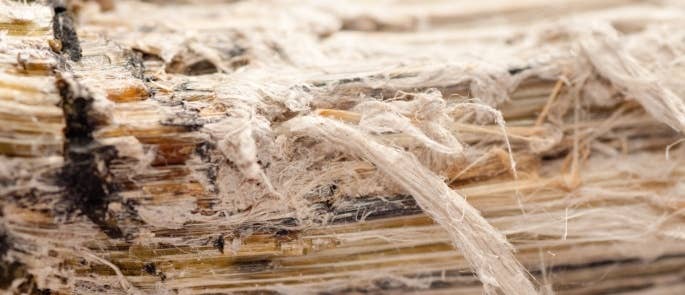
Any asbestos-containing materials (ACMs) in school buildings will not put people’s health in danger if they are left alone. The fibres only pose a risk if you disturb them. The problem, however, is that asbestos is difficult to spot and could be anywhere, as it was originally used widely and for various areas in buildings.
Why is Asbestos in Schools a Problem?
Asbestos is dangerous no matter what premises you’re in, but the nature of schools and their ACMs make them particularly high risk. The primary problems are: risk of exposure; without an awareness, asbestos can be easy to disturb; deterioration of ACMs in old schools; and exposure being disruptive and costly.
Let’s explore these areas in more detail.
Risk of Exposure
Asbestos in school buildings poses a major risk to potentially hundreds of people, including students and staff. What’s more is that these people could be at risk of asbestos exposure for a seriously long period of time – whether it’s teachers who work there for years, or students who study there for their entire primary or secondary education.
The National Education Union (NEU) has shared figures about the effects of asbestos exposure in schools over the last few decades:
- Since 1980, at least 363 school teachers have died from mesothelioma (an asbestos-related cancer). 249 of these deaths have been since 2001.
- School teachers are dying from mesothelioma at an average of 19 per year.
- Julian Peto, a leading epidemiologist, estimates that between 200 and 300 people die each year of mesothelioma, due to exposure to asbestos when they were a student.
Without an Awareness, Asbestos Can Be Easy to Disturb
The risk of disturbing asbestos is significant if teachers, pupils, and anyone who needs to do work in the building – such as contractors – are unaware of its presence and dangers. Students in particular may not fully grasp the severity of asbestos risks and may accidentally disturb it without much consideration of their actions.
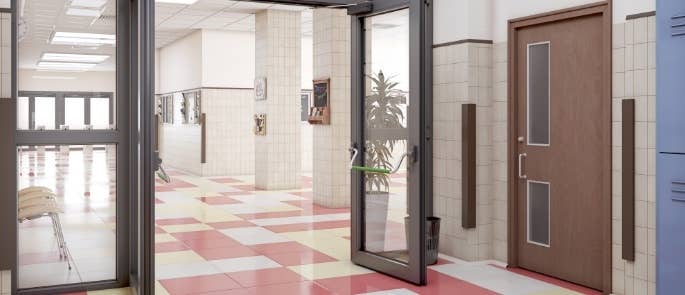
The following case study about exposure to asbestos in schools – shared by the NEU – highlights how easily people can unwittingly disturb asbestos and put others at risk:
In 2007, a 46-year-old woman was diagnosed with mesothelioma. She testified in a court case that she was exposed to asbestos as a student in the 1970s. Her testimony recalled council workers removing ceiling tiles for electrical work, pupils removing ceiling tiles to put blazers in ceiling cavities as a prank, and students vandalising stacked tiles in girls’ toilets. Many of these areas turned out to contain asbestos.
Deterioration of ACMs in old schools
ACMs pose a particularly high risk in old school buildings because asbestos was mostly installed in them between the 1940s – 1970s. According to the NEU, 60% of school buildings are over 40 years old. This means that, over time, the ACMs in these old schools have been naturally deteriorating, which can lead to asbestos fibres being released.
Given that schools are heavily occupied, the risk of deterioration is even greater, and the chances of exposure are incredibly high.
Exposure is Disruptive and Costly
Not only is disturbing asbestos a real threat to people’s wellbeing, but it can also be extremely disruptive and costly for schools. A major asbestos disturbance could result in the school needing to temporarily relocate hundreds of students for safety reasons, while removal and decontamination is underway.
A case study of a school in Wales shows just how problematic this can be:
While a school was undergoing electrical work during the summer, the site manager noticed that the contractors had unsealed bags of asbestos waste. The manager contacted an asbestos consultant, who identified that asbestos fibres had spread throughout the whole school. They had to find 1,000 students somewhere else to attend while the building was decontaminated. This cost the school and council £4.54 million, and it didn’t reopen until a year later.
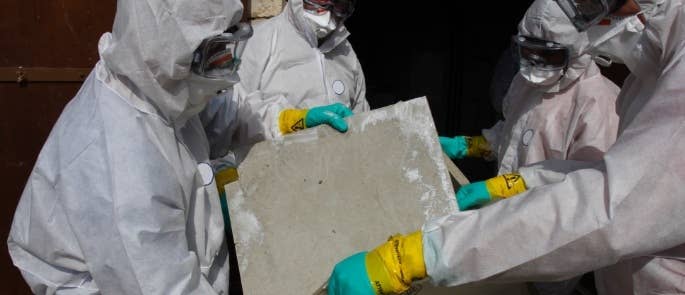
As you can see, it’s crucial for duty holders of schools to manage asbestos, especially if maintenance work needs doing. Furthermore, everyone needs to do their part in preventing exposure. This means you need to know where asbestos might be present in your school.
Where Can Asbestos Be Found in Schools?
Various areas of school buildings may contain asbestos, but it’s difficult to identify at a glance because it’s usually inside something. For example, in a wall cavity for insulation. What’s more problematic is that it’s often hidden in plain sight, and people are usually completely unaware of it.
In 2017, the NEU carried out a survey to determine how many staff knew their school contained asbestos. 46% of respondents had been told that theirs did contain asbestos, but not exactly where it was. Of the 46% who had been told where the asbestos was located, 75% said that it was in easily-accessible locations, such as floors, ceilings, and window frames.
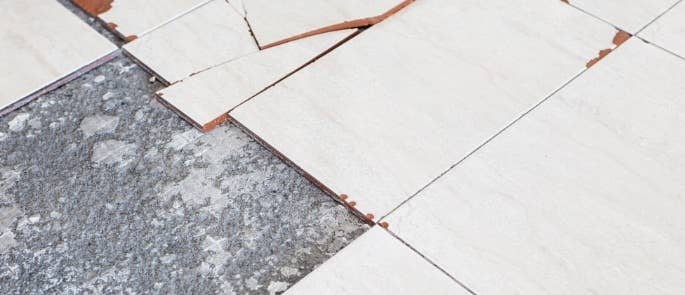
It’s crucial for you to know what the most common asbestos-containing materials in schools are, so you can avoid – and prevent others from – disturbing them.
Examples of Asbestos-Containing Materials in Schools
| Examples of asbestos-containing materials | Examples of where they may be in a school | Examples of how people may disturb them |
|---|---|---|
| Floor and ceiling tiles | In toilets, classrooms, corridors, staff rooms, cupboards, gyms, and halls. | Contractors removing the tiles, students accidentally hitting the ceiling with a ball, vandalism, or damage from general wear and tear. |
| Pipework | Exposed pipes in classrooms, corridors, and boiler rooms. | Knocked into by a desk chair or being disturbed during maintenance work. |
| Window frames | Classroom, lunch room, and corridor windows. | Being picked at by students or disrupted due to general wear and tear of using the window. |
| Insulation boards | In walls and columns, such as those in toilets, classrooms, corridors, staff rooms, cupboards, and halls. | Puncturing or damaging the wall, e.g. a teacher putting up a display with drawing pins or a student knocking into it. |
| Cement and plaster | Spray finishes on walls, ceilings, and columns. | Damaging or disrupting the integrity of the structure, e.g. a contractor drilling into it or a student putting up posters with a staple gun. |
| Roofing | Exterior roofing of school. | Disturbed during contractor work or accidentally damaged by a football. |
| Boiler insulation | Boiler rooms. | Cleaners maintaining the room and general wear and tear. |
What are the Legal Duties of Schools that Contain Asbestos?
The Control of Asbestos Regulations 2012 places a legal responsibility on schools’ duty holders to manage asbestos. This refers to those in charge of the school’s maintenance or who have some control of the premises – usually the local authority or governing body.
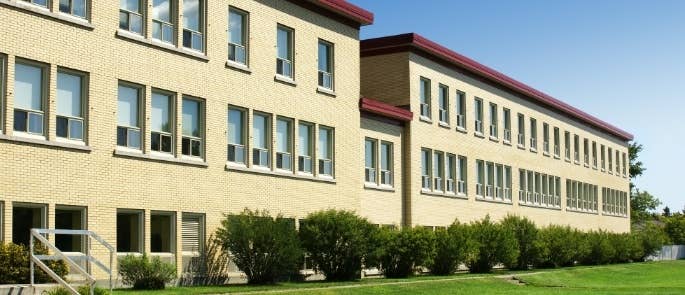
Their duties include, but are not limited, to:
- Making and keeping up-to-date records of the location and condition of asbestos-containing materials, or materials which are presumed to contain asbestos. They should assume that materials do contain asbestos unless they have strong evidence to the contrary.
- Assessing the risk of ACMs being disturbed and consequently exposing people to asbestos fibres.
- Preparing a plan that identifies which parts of the premises contain asbestos. They must set out in detail how the risks from these materials will be managed. This doesn’t necessarily require duty holders to immediately arrange for asbestos removal in schools. The HSE currently recommends that it’s safer to leave undamaged ACMs alone and introduce a system of management. If a risk assessment identifies that ACMs are highly vulnerable to being disturbed or degrading, they may need to consider arranging for removal to eliminate the risk.
- Sharing information on the location and condition of the materials to anyone who is liable to work on or disturb them, including staff and contractors.
It’s therefore expected that duty holders share information about asbestos in the school with staff members – particularly site and facilities managers. This information should be passed on to teachers, and anyone else who works in the school, who may be at risk of disturbing or being exposed to the asbestos. The duty of preventing asbestos risks then extends to you.
In some cases – such as if the risk is high but removal hasn’t been arranged – it may also be appropriate for staff to receive asbestos awareness training. This provides a greater level of understanding about asbestos. However, a basic awareness of where asbestos is in your school and what procedures to follow is still essential, as no two premises are the same.
Need a Course?
Our Asbestos Awareness (Category A) Training provides you with the knowledge and skills you need to keep yourself and others safe from asbestos. You will understand what asbestos is and where you may encounter it, the dangers associated with asbestos exposure, and what to do if you discover asbestos.
What Should I Do If I Find Asbestos in My School?
If you accidentally disturb asbestos, taking the necessary steps to protect yourself and others is critical. We’ve created the acronym SLACC to help everyone in a school setting remember what to do:
STOP. If you think you’ve discovered or disturbed asbestos, stop whatever you were doing.
LEAVE. Leave the material alone. Do not try to remove or repair it, such as if you break a tile. Trying to put it back to normal could make things worse.
ALERT. Let a senior member of staff – e.g. the site manager – know what happened.
CLEAN. Clean your clothes, skin, and hair if you suspect they have picked up asbestos fibres. Don’t simply dust yourself off, as this will spread the fibres. Use a wet cloth to remove visible contamination and ensure these are disposed of as asbestos waste.
CLOSE. You or another member of staff should close off the area and put up warnings. Your school will then decide what to do with the contaminated area.
Asbestos in Schools Poster
We’ve created a free downloadable asbestos awareness poster that you can display in your school. It will inform both members of staff and students of the dangers of asbestos, where it may be in your school, and what to do if you discover it.
If you’re a teacher or other staff member in a school, you’re in an excellent position as an educator and authority figure to help control asbestos risks. Take every opportunity you can to increase students’ and other staff members’ awareness of what the dangers are and how to prevent them.
What to Read Next:
- What Are the Symptoms of Asbestos Exposure?
- Promoting Staff Wellbeing in School
- Asbestos Awareness Online Training


